There are many ways to preserve food for long-term storage at home. Here, we take a closer look at canning, root-cellaring, and dehydrating.
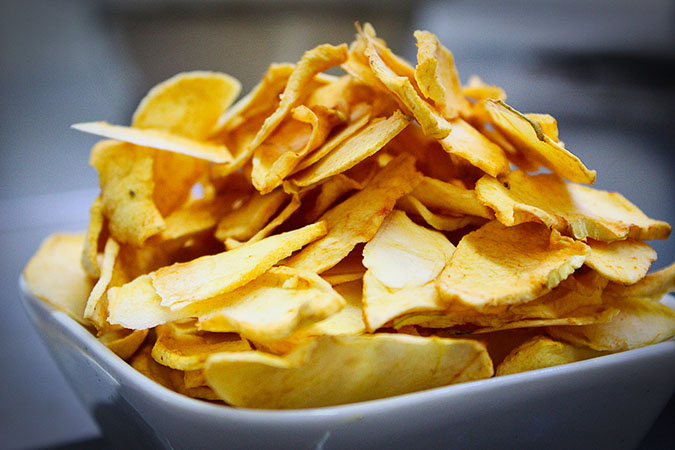
Image by António Mendes from Pixabay
3 Ways to Preserve Food for Long-Term Storage
There are many ways to preserve food for long-term storage in the home setting—canning, freezing, root-cellaring, dehydrating, salt-curing, freeze-drying, and fermenting, just to name a few. Today, let’s take a closer look at canning, root-cellaring, and dehydrating. (But I encourage you to look into as many of the others as possible!)
Types of Food-Storage Containers
As far as storing dry goods, canned goods, and dehydrated goods goes, there are a few options for optimal long-term food storage. Glass mason jars, vacuum-seal bags, Mylar bags, and food-grade buckets are all highly recommended.
You May Also Enjoy:
While mason jars are typically associated with home canning, they can be used for dry canning as well. Both mason jars and vacuum-seal bags can be used in conjunction with a vacuum sealer to remove most or all of the oxygen, extending the shelf life. Food-grade buckets and Mylar bags are also ideal for storing bulk dried goods.
Keep in mind that all of these containers can and should be used in conjunction with oxygen absorbers to prevent any moisture being absorbed from the environment.
BONUS: Download the Food Preservation Processing Time Log
Canning
What Is Canning?
Canning is one of the most common ways people preserve food for long-term storage in a home setting. While you cannot can everything, there are hundreds of things you are able to can safely at home!
There are 2 types of canning: water-bath canning (for high-acidic or pickled foods) and pressure canning (for low-acidic foods). Both are excellent ways to preserve the harvest and create food security for your family!
Learn to can safely with the step-by-step guidance in our online trainings—“Water Bath Canning” and “Pressure Canning.”
Canning Safety
Understanding how to properly can and how to prevent food spoilage is crucial to your success. Check out the National Center for Home Food Preservation website, or purchase the Ball Book for safe, trusted, and tested home-canning recipes.
Canning Equipment
To successfully preserve your harvest through home canning, you will need some equipment. If you have never canned before, the initial investment may seem high. But, if you are savvy—and I know you are—then it doesn’t have to break the bank!
Thinking outside the box pays off! Ask friends and family if they have any kitchen equipment they no longer need. Check sites like Craigslist or eBay for mason jars, utensils, and pots. Scour garage sales or thrift markets, as they are a gold mine for finding usable canning equipment and jars.
Once you’ve got the tools, they will most likely last a lifetime! The only thing you’ll need to purchase each year is new lids.
Water-Bath Canning
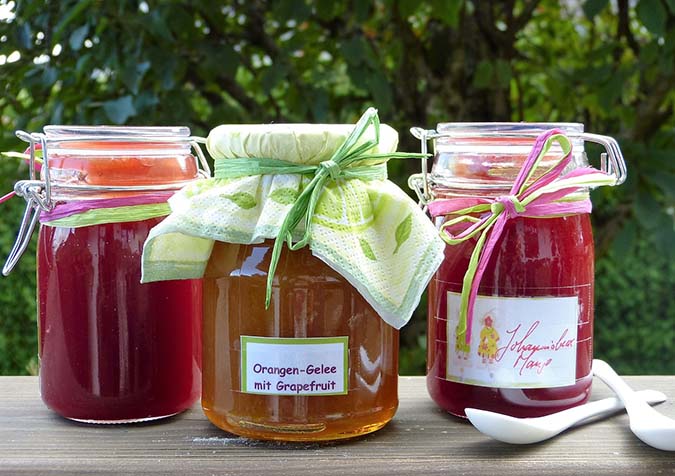
- Large stockpot with rack
- Jar lifter (tongs)
- Jar funnel
- Bubble remover/headspace tool
- Jars, lids, and bands
Water-bath canning, or the boiling-water method, is by far the simplest method of home canning. The water-bath method can only be used for high-acidic foods. Some garden-fresh favorites ideal for water-bath canning would be tomato-based recipes, pickles, jams and jellies, and other pickled foods.
- Tomato-based products safe for water-bath canning include salsa, tomato sauce, tomato juice, crushed or diced tomatoes, ketchup, and taco or hot sauce.
- Pickled products safe for water-bath canning include all types of pickles, chutneys, and relishes.
- Jams, jellies, preserves, and fruit butters that are safe for water-bath canning can be made from berries, figs, apples, grapes, peppers, citrus, and more!
Easy Hot Pepper Mix Recipe
For this recipe, you can choose to leave peppers whole or to cut them into 1-inch pieces.
Please Note: While not outlined in the recipe below, follow standard canning practices for water-bath canning, jar sterilization, heating jars, headspace, checking the seal, elevation adjustments, etc.
1-1/2 lbs. banana peppers
1 lb. jalapeño peppers
1/4 lb. serrano peppers
6 c. vinegar
2 c. water
3 cloves of garlicCombine peppers together in a bowl. Set aside.
Combine vinegar, water, and garlic in a large stainless-steel pot and bring to a boil. Reduce heat and simmer for approximately 5 minutes. When complete, discard garlic.
Pack peppers into hot jars, leaving 1/2-inch headspace.
Ladle hot vinegar mixture over top of peppers, leaving 1/2-inch headspace.
Remove air bubbles from jars.
Wipe rim and add two-piece lid and ring. Finger tighten the lid.
Process jars completely submerged in a boiling-water bath for 10 minutes.
Remove and cool for 24 hours before checking the seal.
Pressure Canning
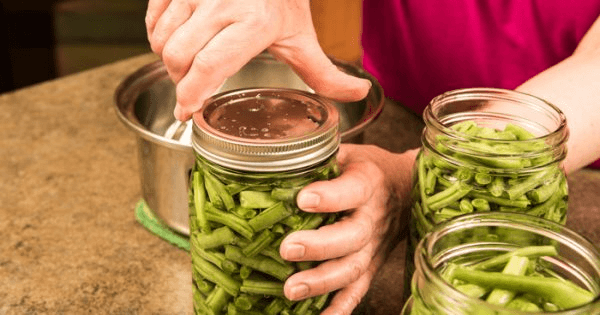
- Pressure canner with pressure gauge
- Jar lifter (tongs)
- Jar funnel
- Bubble remover/headspace tool
- Jars, lids, and bands
Pressure canning is a bit more complicated than the water-bath method described above. Pressure canning is used to preserve low-acid foods. The processing temperature for canning low-acid foods is approximately 240°F, which is much hotter than the 212°F of a water-bath canner. These elevated temperatures ensure that all of the bacterial spores are destroyed during processing.
Some garden-fresh favorites for pressure canning include green beans, potatoes, carrots, beans, corn, and mixed vegetables. Since pressure allows for more versatility, you can even put up things like soups, stews, and meat!
It is important to note that a pressure canner is different than a pressure cooker. A pressure cooker cannot be used for home canning.
Simple Canned Beans Recipe
For this recipe, you can use any dried bean (kidney, navy, pinto, etc.).
Please Note: While it is not outlined in the recipe below, you will need to follow standard canning practices for pressure canning, jar sterilization, heating jars, headspace, checking the seal, elevation adjustments, etc.
3/4 lb. dried beans per quart
Salt
WaterPlace beans in a large pot and cover with 2 inches of water. Bring to a boil for approximately 2 minutes.
Remove from heat and let stand for 1 hour.
Drain water from beans and cover with 2 inches of fresh, cool water.
Bring beans to a boil again for 30 minutes, stirring frequently.
In another pan, bring water to a boil.
Pack hot beans into hot jars leaving 1-inch headspace.
Add 1/2 tsp. of salt to pint jars, and 1 tsp. of salt to quart jars (optional).
Cover beans with boiling water, leaving 1-inch headspace.
Remove air bubbles from jars.
Wipe rim and add two-piece lid and ring. Finger tighten the lid.
Process pint jars for 1 hour 15 minutes at 10 lbs. of pressure, and quart jars for 1 hour 20 minutes at 10 lbs. of pressure.
Please Note: Altitude affects processing times and pounds of pressure. Please refer to the National Center for Home Food Preservation website or the Ball Book for more information.
How to Safely Can Without Electricity
What would you do if you didn’t have electricity? Would you have a way to preserve the harvest? With a little know-how and planning you can still have a stove, even in the event of the unthinkable.
Right now, buy something as simple as a camping stove or grill, both run on propane. If you have a fire pit, you could even use that! Maybe you have an outdoor kitchen. My husband built an outdoor canning stove from a secondhand cooktop we purchased from Craigslist.
Root Cellaring
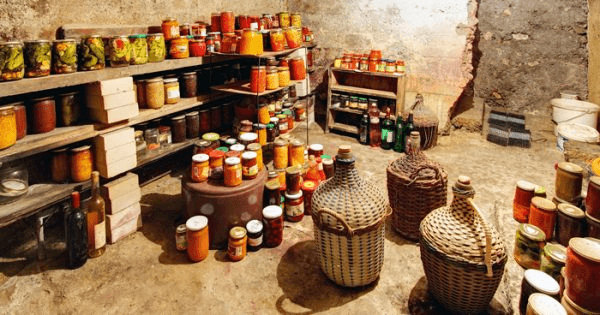
What Is Root Cellaring?
In the simplest terms, a root cellar is a domestic “cellar” used for storing root vegetables. It is one of the best methods for storing the right foods. The key to a successful root cellar is establishing optimal conditions.
You May Also Enjoy:
Typically, a root cellar would be underground or in a basement. However, your root cellar doesn’t have to be a literal cellar. (You could use an old refrigerator, for example.) However, there are a few things you need to consider when designing your root cellar.
Safety Practices
Root cellars need four things to succeed:
- Ventilation
- Humidity
- Temperature (close to 32°F but not below)
- Darkness
If you have a cellar or a basement, convert part of this space into a root cellar. Do a little research upfront to ensure you have the optimal conditions. On the other hand, if you don’t have a basement, bury a drum in the ground or use an old refrigerator. There are a lot of really clever and thorough tutorials on the Internet for how to build a root cellar.
You May Also Enjoy:
“Planning a Summer Kitchen: 17 Design Considerations”
Most produce should be placed in open-weave baskets and kept up off the floor. Ideally, do not stack things too deeply, as the excess weight can lead to premature spoilage. The same goes for fruits, and it is best to keep them from touching one another and even individually wrapped in tissue paper.
You could build or purchase storage bins and racks specifically designed for optimal root cellaring.re
What Can I Store in a Root Cellar?
You can store apples, dried beans, carrots, garlic, onions, parsnips, pears, peas, potatoes, sweet potatoes, winter squash, and more!
Dehydrating
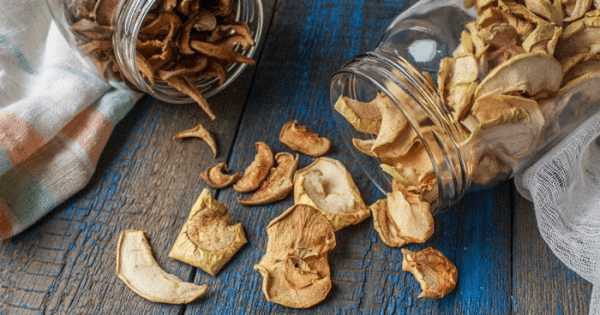
What Is Dehydrating?
Dehydrating is a method of food preservation that involves removing water from food to prevent spoilage. Most foods can be dehydrated. By eliminating all the moisture, you prolong the shelf life of any given food item.
You May Also Enjoy:
You’ll be able to eat some dehydrated food as-is, but other foods will need to be reconstituted, or rehydrated. Some examples of foods that are typically eaten dehydrated are dried fruits, fruit leathers, and jerky. However, most vegetables and dairy will require reconstitution to make them palatable.
How Do I Dehydrate Safely?
Blanching, steaming, and dipping are specific pretreatments and special preparations required for some foods. Humidity, time, and temperature all play a role in successful food dehydration, so it is an excellent idea to purchase a dehydrating book to add to your survival library!
Methods of Dehydration
There are many ways to dehydrate foods. Some methods work better and faster than others, but all of them are perfectly acceptable. Some of the most common ways food is dehydrated include:
- Sun drying
- Sun Oven drying
- Air drying
- Oven drying
- Electric dehydrator drying
Ways to Store Dehydrated Goods
There are many ways to store dehydrated foods. One of the most common ways is to use mason jars. However, you could use something as simple as a plastic storage bag. Whatever you choose, store dehydrated foods in a cool, dark, and dry location. If possible, add an oxygen absorber! Oxygen absorbers are small packets that contain an iron powder that helps keep foods fresh without unhealthy additives.
______________
This is an updated version of a post that was originally published on July 10, 2020.
The Grow Network is a participant in the Amazon Services LLC Associates Program, an affiliate program designed to provide a means for our team to earn fees for recommending our favorite products! We may earn a small commission, at no additional cost to you, should you purchase an item after clicking one of our links. Thanks for supporting TGN!
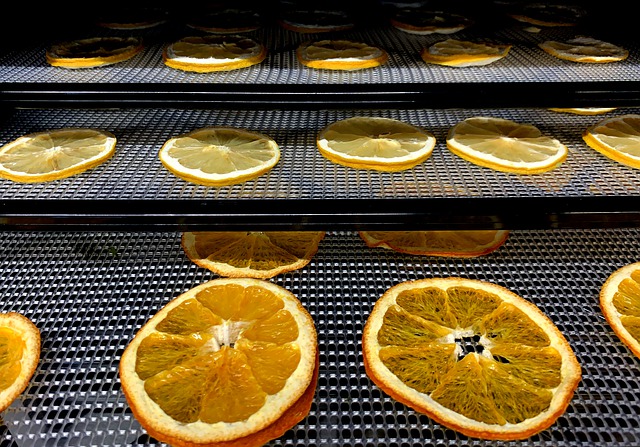
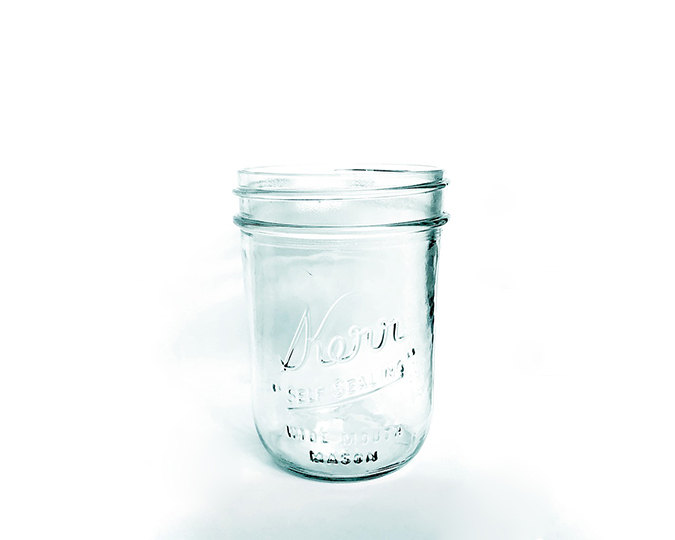
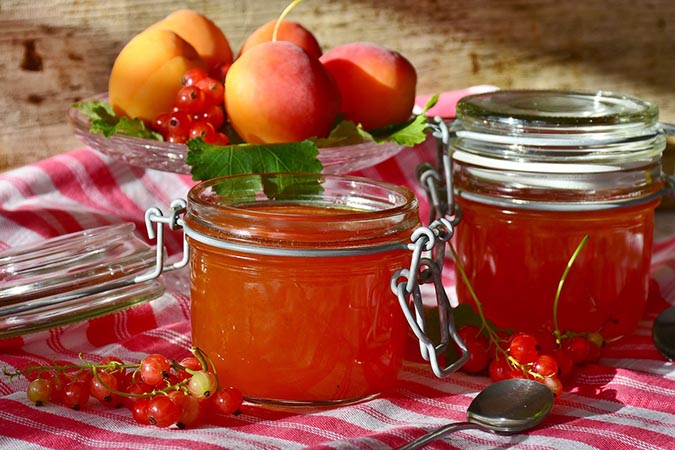
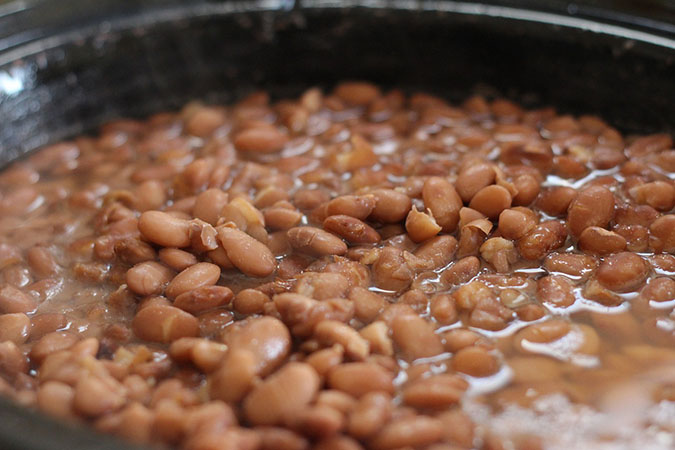
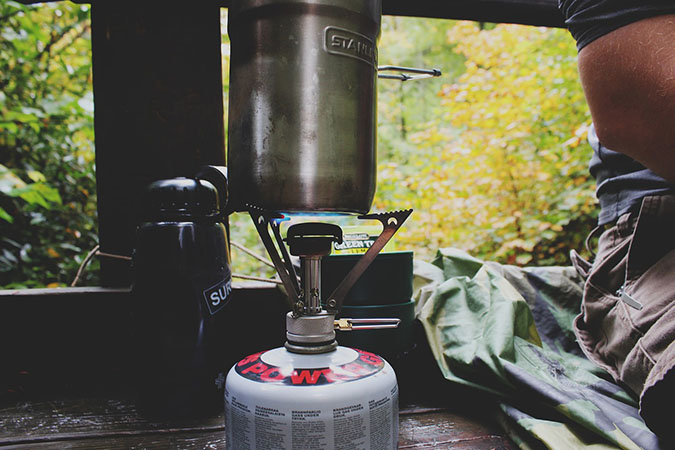







COMMENTS(4)
This is good information. I have tried root cellering my apples when I get an abundant crop like I did last year. I had planned on dehydrating the majority of them but ran out of time, so they spoiled after several months.
My friends use an air conditioning unit to keep their root cellar cold. This can work in a basement as well
I am obsessed with water bath canning. I am also learning pressure canning, what fun! I also like fermenting vegetables like cabbage, or tea like kombucha, but I need a better root cellar or an air conditioning unit in the basement to turn a room into a root cellar like place. My ultimate goal is to raise my own food, and can it. I kept in the “root cellar” last year butternut squash, which is the only thing I know of that can last for months just about anywhere if cured correctly.
I wondering can I store freeze-dried food in the root cellar. We have darkness